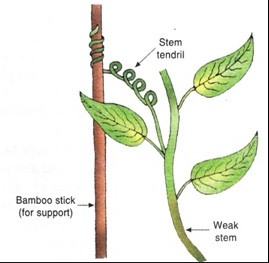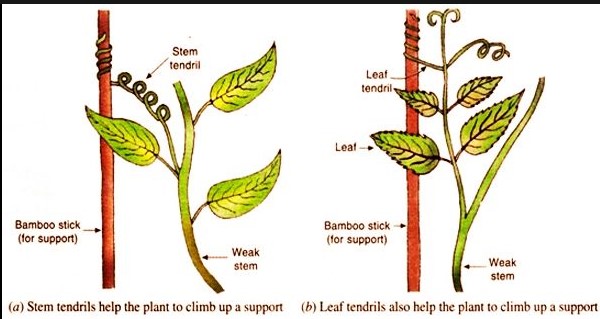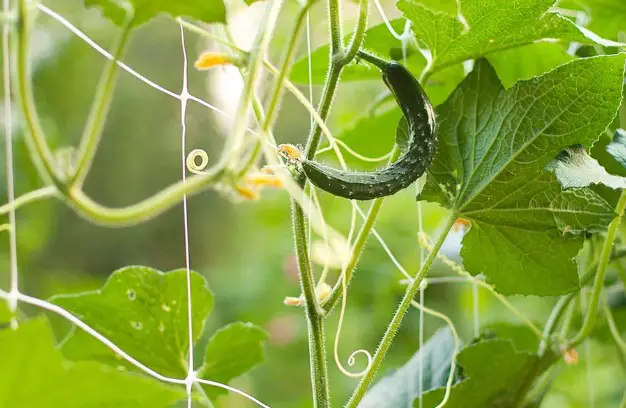Tendrils are fascinating plant structures that serve as lifelines for climbing plants, enabling them to reach towards sunlight by clinging onto supports. These slender, thread-like organs have captivated botanists and plant lovers alike for their ingenious ways of assisting plant mobility and survival. Their ability to twist and turn, securing the plant in place, highlights the remarkable adaptability of plant life.
The difference between stem tendrils and leaf tendrils lies primarily in their origin and structure. Stem tendrils originate from the stem of the plant and are essentially modified stems, whereas leaf tendrils are modified leaves or parts of leaves. This distinction plays a crucial role in how they function and contribute to the plant’s growth and ability to climb.
Tendrils have evolved in various plant species as a means to support climbing towards light and space, an essential strategy for survival in dense vegetative environments. The intricacies of their development, from either stems or leaves, underscore the diverse strategies plants employ to navigate their ecosystems. This variety not only showcases the evolutionary ingenuity of plants but also emphasizes the complexity hidden within what may initially appear as simple plant parts.

Tendrils Explained
What Are Tendrils?
Tendrils are specialized plant structures that play a pivotal role in the support and growth of climbing plants. Acting like natural grappling hooks, tendrils enable plants to attach to and climb over various supports, reaching towards sunlight. This unique adaptation helps plants in maximizing photosynthesis, essential for their survival and growth.
Types of Tendrils
Tendrils can be categorized based on their origin into two main types: stem tendrils and leaf tendrils. Each type has distinct characteristics and functions, though their ultimate goal is to aid the plant in climbing and support.
Stem Tendrils
Origin and Structure
Stem tendrils are formed from the modification of stems. They typically originate from the axillary bud, taking the place of a branch or a leaf. Their structure allows them to be flexible yet strong, capable of supporting the weight of the plant as it climbs.
How Stem Tendrils Develop
- Stem tendrils develop from plant meristems, the regions of growth at the tips of roots and shoots.
- They begin as small bulges on the stem and gradually elongate and differentiate into the tendril structure.
Structural Characteristics
- Composed of vascular tissue, stem tendrils are capable of photosynthesis.
- Their spiral shape and sensitive tips allow them to coil around supports.
Functionality
The primary role of stem tendrils is to anchor and support climbing plants. They do this by:
- Sensing touch: When the tip of a tendril comes into contact with a support, it initiates coiling.
- Providing stability: As the tendril wraps around a support, it forms a secure anchor that supports the plant’s growth upwards.
Examples
Common plants with stem tendrils include grapes (Vitis species) and cucumbers (Cucumis sativus). These plants use their tendrils to climb fences, trellises, and other supports.
Leaf Tendrils
Origin and Structure
Leaf tendrils are modified leaves or parts of leaves. This adaptation allows them to serve a similar supportive role to stem tendrils but originates from a different part of the plant.
Development from Leaves
- Leaf tendrils usually develop from the tip of a leaf or from a part of the leaf blade.
- In some plants, what appears to be a leaf tendril is actually a modified leaflet of a compound leaf.
Unique Structural Features
- They often have a thinner and more delicate structure compared to stem tendrils.
- Leaf tendrils may also exhibit photosynthetic activity, contributing to the plant’s energy production.
Functionality
Leaf tendrils support climbing plants by:
- Attaching to supports: Similar to stem tendrils, they coil around structures to hold the plant in place.
- Enhancing plant reach: They enable the plant to extend its reach beyond the main growth, exploring for suitable supports.
Examples
Plants that feature leaf tendrils include sweet peas (Lathyrus odoratus) and passionflowers (Passiflora species). These tendrils emerge from the leaf and assist the plant in climbing.
Key Differences
Anatomical Differences
The main anatomical difference between stem and leaf tendrils is their point of origin—stem tendrils arise from stems, while leaf tendrils come from leaves. This difference influences their structure, with stem tendrils generally being thicker and stronger, and leaf tendrils thinner and more flexible.
Functional Insights
Despite their different origins, both types of tendrils perform the essential function of supporting the plant. However, the sensitivity and reactivity to touch may vary, influencing how effectively they can secure the plant to supports.
Adaptive Significance
The evolution of tendrils reflects the adaptive strategies of climbing plants to maximize light exposure and minimize competition. Both stem and leaf tendrils showcase the plant’s ability to utilize available resources for survival and growth, highlighting the ingenuity of plant evolution.

Visual Identification
Spotting the Differences
Identifying whether a tendril is a stem tendril or a leaf tendril can be a fascinating aspect of exploring plant life. Here are some tips to help you distinguish between the two in nature:
- Location on the Plant: Observe where the tendril connects to the plant. Stem tendrils emerge from the stem, while leaf tendrils will be connected at the leaf or the base of the leaf.
- Shape and Texture: Generally, stem tendrils are thicker and may have a more robust texture. Leaf tendrils are often finer and may even show parts of the leaf at their base.
- Growth Pattern: Look at the growth pattern; stem tendrils often grow in a spiral pattern directly from the stem, whereas leaf tendrils can show more variation in their placement and how they emerge from the leaf structure.
Photographic Comparisons
A visual guide can significantly aid in distinguishing between stem and leaf tendrils. Consider consulting botanical books or online databases with photographs. These resources often provide close-up images that highlight the key features of each tendril type, making it easier to identify them in the wild.

Role in Plant Survival
Climbing Mechanisms
Tendrils play a crucial role in the survival strategy of climbing plants. They allow plants to:
- Reach for Light: By climbing, plants can avoid the shade and maximize their exposure to sunlight, essential for photosynthesis.
- Conserve Energy: Tendrils enable plants to use existing structures for support, conserving energy that would otherwise be spent on developing a sturdy stem.
- Avoid Predation: Elevating off the ground can help protect the plant from ground-dwelling herbivores.
Ecological Importance
The presence of climbing plants with tendrils contributes significantly to ecosystem health and biodiversity. They provide:
- Habitats: Climbing plants can create habitats for various insects and birds, enriching the biodiversity.
- Food Sources: Many climbing plants are important food sources for wildlife, including fruits, leaves, and flowers.
- Soil Stability: By covering the ground and climbing trees, these plants can help stabilize soil and prevent erosion.
Frequently Asked Questions
How do tendrils aid in plant climbing?
Tendrils assist climbing plants by securely attaching the plant to a support, allowing it to grow upwards with stability. They can sense physical contact with objects, upon which they coil around the support, effectively anchoring the plant. This mechanism enables climbing plants to reach light and space more efficiently, vital for their growth and survival.
What are the evolutionary advantages of tendrils?
Tendrils offer evolutionary advantages by enabling plants to climb towards sunlight, maximizing exposure for photosynthesis. This climbing ability allows plants to thrive in competitive ecosystems by occupying vertical spaces, avoiding ground-level shade, and accessing untapped resources. The adaptability of tendrils contributes to the plant’s reproductive success and spread.
Can tendrils develop from other plant parts?
While tendrils most commonly develop from stems or leaves, in some plant species, they can also originate from other parts, such as inflorescences or flower stalks. This versatility highlights the plant kingdom’s adaptive strategies to ensure survival and reproduction, showcasing the evolutionary innovation that tendrils represent.
How do stem tendrils and leaf tendrils differ in functionality?
Stem tendrils and leaf tendrils differ slightly in functionality due to their structural differences. Stem tendrils, being sturdier, often support larger weights and can anchor the plant more securely. Leaf tendrils, while also effective in support, may be more sensitive to touch and responsive in coiling. Both, however, fundamentally serve the same purpose of aiding in plant support and climbing.
Conclusion
The intricate world of tendrils offers a glimpse into the adaptive strategies of climbing plants, revealing a fascinating aspect of plant morphology and evolution. The distinction between stem tendrils and leaf tendrils, rooted in their origin and structure, highlights the diverse mechanisms plants employ to navigate and thrive within their environments. This knowledge not only enriches our understanding of plant biology but also emphasizes the remarkable adaptability of life.
Appreciating the differences and functions of stem and leaf tendrils opens up a broader perspective on the complexity of plant life and its evolutionary innovations. It reminds us of the intricate relationships between form, function, and survival in the natural world, encouraging further exploration and curiosity about the plant kingdom’s many wonders.
